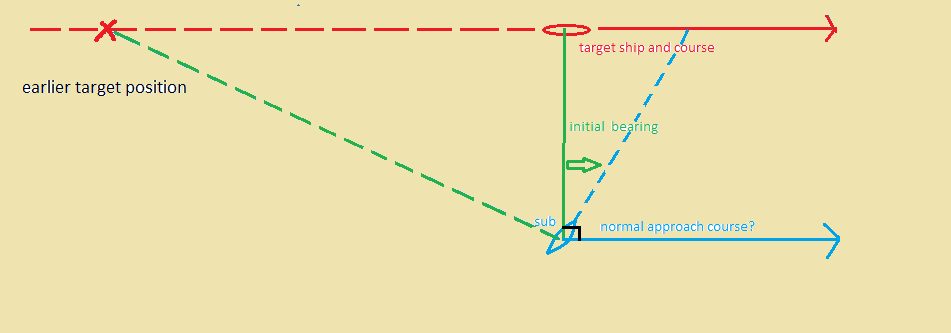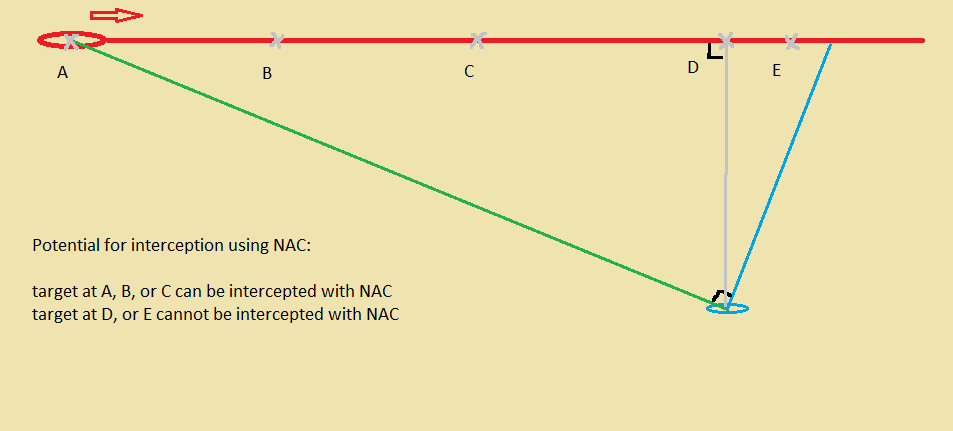 04-27-14, 04:45 PM
04-27-14, 04:45 PM
|
#9
|
Silent Hunter 
Join Date: Sep 2010
Posts: 3,975
Downloads: 153
Uploads: 11
|

Quote:
Originally Posted by AdamMil

Perhaps I'm dense, but I just don't see it. If they taught it, then I imagine it must have worked, so I'm probably misunderstanding you. But what about these cases?
 
In both cases, the sub turns to put the target on its beam, and in both cases it can adjust its speed to keep the target there, but in neither case will it ever intercept, no matter how slow the target is going. |
You are right about the cases you illustrated. Neither of these would permit an interception with the Normal Approach Course. If the target had been detected earlier, the situation would be very different.
Here, I took your first case and extended the target track backwards to show how the Normal Approach Course could be used:

Your second case is just like the first, except the target is even farther past.
Here is a diagram which illustrates the problem. The target is shown at an early position, A, and later positions, B, C, D, and E are marked. The gray line is the normal course, and is the shortest distance to the target track. If the sub is close to the target track and detects the target early, the NAC is nearly the same (as in case A).

The target can be easily intercepted if detected at A, with just a fraction of the targets speed (assuming the diagram is drawn to scale). It can be intercepted at B, with a little more speed, or even at C. The farther along towards D the target reaches, the harder it is to intercept (that is, it requires more speed).
If the target reaches D before detection, the NAC will not accomplish anything, as you stated. Once the target has reached D, or E (or any point to the right of D), no course will permit an interception without having a greater speed than the target. For submerged submarines in WWII, this was generally an impossibility.
That would be in the nature of chasing after and overtaking a passed target, and was considered a different problem.
The geometry here shows why, in submerged operations, it was considered important to detect potential targets as early as possible. It also shows why many targets were detected, but still 'got by'.
|

|

|